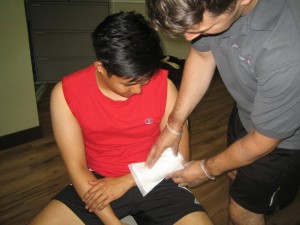Cuts and scratches are described as damage on the skin surface. A cut is a line that can go through the skin and into the muscle below. As for a scratch, it only involves the skin surface that does not penetrate the lower tissues. Take note that cuts and scratches can bleed or turn red in appearance. In some cases, they can become infected and leave behind scars.
Causes of cuts and scratches
When it comes to cuts, it occurs when a sharp object such as a razor blade or knife pierces through the skin. Even objects with thin edges can also cause cuts. A scratch can be caused when the skin is subjected to an abrasive surface such as concrete or unfinished wood. Wounds from animals are oftentimes classified as scratches especially from cats.
Risk factors

Cuts and scratches can occur anytime and to anyone. An individual is more likely to acquire cuts if involved in a combative scenario or when using sharp objects. Scratches typically occur by accident. It is important to note that children are more prone to cuts and scratches than the adults since they are more active and not in full control of their developing bodies.
Symptoms
The usual symptoms of cuts and scratches include the following:
- Redness or swelling around the wound
- Bleeding
- Irritation or pain on the skin surface
Diagnosing cuts and scratches
Cuts and scratches are visible on the surface of the skin. In some cases, small-sized cuts such as a paper cut require a magnifying glass to spot one.
Treatment of cuts and scratches
There are various ways to properly manage cuts and scratches depending on their severity. In case the skin is kept clean, wounds can heal without requiring further care. The healing process can be hastened with several measures that you can learn in a first aid course today.
- You have to apply pressure on cuts or scratches to control the bleeding. Covering the wound with a bandage will keep it clean and allow direct application of an antibiotic cream or ointment. The bandage will absorb any leftover blood as the wound heals. Before the bandage is applied, the wound must be cleaned with water or ethyl alcohol.
- Over-the-counter and prescription medications can be used for wound care. Antibiotic ointment is applied to prevent infection. Pain medications can help reduce irritation and control inflammation.
- When it comes to large open wounds, it would require stitches to heal properly. In case the cut becomes infected that it could no longer be repaired, the area that is infected should be removed.
- A tetanus booster shot is oftentimes recommended after sustaining a cut.
Outlook
Most cases of cuts and scratches can go away over time, but some can become infected and lead to scar formation. In case a wound becomes infected, it should be treated in order to avoid serious damage.
